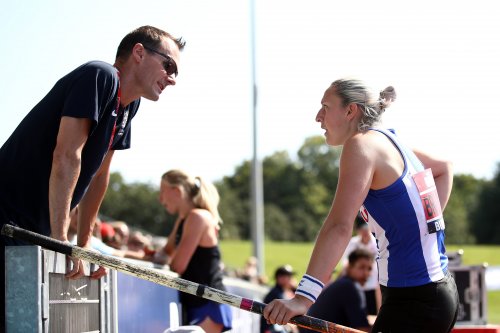 Scott Simpson with Holly Bradshaw, photo courtesy of British Athletics
Scott Simpson with Holly Bradshaw, photo courtesy of British Athletics
This is the 4th of 4 pieces by Stuart Weir on British pole vault coach Scott Simpson, his training methods, his love of the pole vault fraternity, and his ability to get pole vaulters to speak about the challenges at the elite level.
RelatedPosts
Scott Simpson, part 4 Moving to the next level 3
Moving to the next level is an essential part of an athlete’s development as they progress from national to international level and to compete for global medals. In this article, we look at examples from women’s pole vault and high jump as well as getting athletes’ and a coach’s perspective.
In women’s pole vault we take as an example how to progress from 4.40m to 4.80m. To put that in context 4.75m would have secured a medal at two of the last six global championships – 4.85m at all six. Scott Simpson, coach to Harry Coppell and Holly Bradshaw, acknowledged that it was a very familiar situation for athletes to be stuck at a particular time or distance and to be unsure how to progress and that for women vaulters, it often happened at 4.40m or 4.50m.
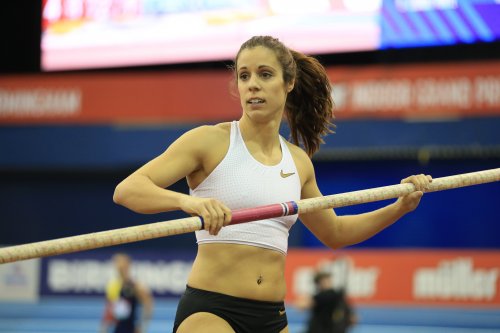 Katerina Stefanidi, photo by British Athletics
Katerina Stefanidi, photo by British Athletics
In a recent English Athletics webinar*, three world-class pole-vaulters were asked to explain the process of progressing, from the athlete’s perspective and how they would advise a younger athlete.
Katerina Stefanidi, World and Olympic gold medallist said: “What I feel is sometimes missing among some of the younger girls is the respect for the sport – specifically respect for the professional part of the sport. I remember at the London 2017 when the bronze medal height was 4.65m – not a great height in a World Championship. Afterwards, I heard people saying ‘if I had been there and I could’ve won a medal at the World Championship’. Professional sport doesn’t work that way and I think there is a massive lack of respect for what we do. We are out there jumping 20 or 30 times a year. And I think more and more this is happening because more girls are jumping higher, younger. They’re breaking age group records; they are breaking high school records. But there is a massive difference in level from 4.30m, 4.40m that you’re jumping when you’re one of the best as a junior to 4.70. But even for the girl jumping 4.50 to get to 4.60 is hard. That is a different level and to do it under the conditions that we have to do it”.
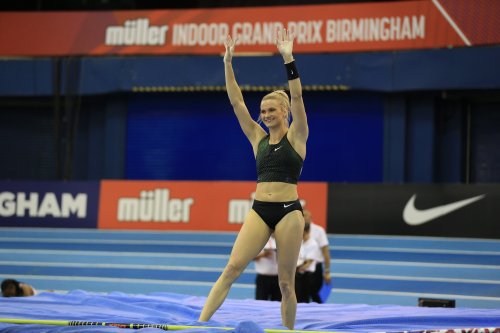 Katie Nageotte, photo by British Athletics
Katie Nageotte, photo by British Athletics
American, Katie Nageotte, said: “People sometimes think ‘I have improved this much year from last year so I’m naturally going to go this much again’. What they don’t realize is that when you get to a certain height and I would say for women it’s about 4.60m/4.70m that you are fighting tooth and nail for every centimetre beyond that. And it doesn’t come easily. It comes from every day putting in the work. It is every little thing you’re doing. I didn’t appreciate that when I was younger. I was good when I was young but I had to learn how to work hard. And I had to work really hard for the first time in my life – as opposed to just doing well on talent. And as a female you cannot ‘talent’ your way much beyond 4.60m or 4.70m because of that point we’re all equally gifted and it’s what you are doing that will set you apart”.
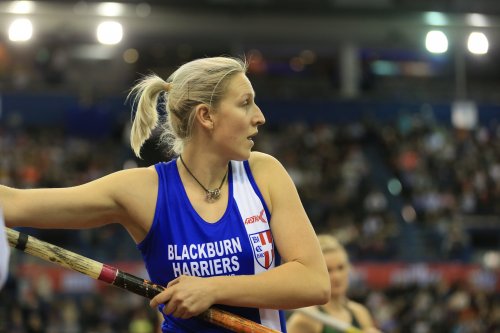 Holly Bradshaw, photo by British Athletics
Holly Bradshaw, photo by British Athletics
Holly Bradshaw, who is coached by Scott Simpson, said: “I think sometimes youngsters don’t value the consistency of month by month training, thinking ‘this is what I want to do. I want to move up this pole etc’. Instead, it’s all a big rush and while you might get results in the short term, my experience showed me that it’s a long-term journey. You need to change one variable at a time and make the whole thing very progressive. It takes a long time to build good momentum and good confidence. People underestimate how much a big jump affects someone’s confidence.”
While Scott was the moderator of that webinar, he asked more questions than he answered. I was keen to get his view of how he would help an athlete to make that progression. What would he do if a female athlete approached him and said “I am stuck at 4.40m – can you get me to 4.70m/4.80m?” How would he approach the task?
He explained that the first stage for a coach taking on the athlete would be to try to understand where the athlete was at and why she was “stuck” at that point. “The first stage would be finding out her history in considerable detail, involving some serious conversation with her about her journey, her numbers, her output. And also conversations with the athlete’s previous coaches to see what their observations were. Numbers and data in this context centre on three main domains – technical ability, physical ability and behavioural issues.
Scott continued: “Technical – and I would want to look at some video of her vaulting. Are there major flaws or are there obvious areas where improvements can be made? What are the priorities?
“Physical ability – what does she bring to the table physically? What are the speed parameters, what are the power outputs, what are her strength characteristics? What has been her injury history, what are we dealing with, what are we fighting against? What do we need to consider when writing training programmes? I think historically we look at what people bring to the table physically, in terms of talent identification and use that to make a lot of our decisions. But that doesn’t take into consideration any of the other factors that are critical to being a successful elite athlete. Physical is a massive part because I can’t take someone who is a great competitor and who has the real discipline and great organizational skills and delivers great performances in a competitive environment when it really matters – if they don’t have any physical attributes whatever. So there is no point in putting them on a talent program just because they have great mental skills. You have to have the physical as well.”
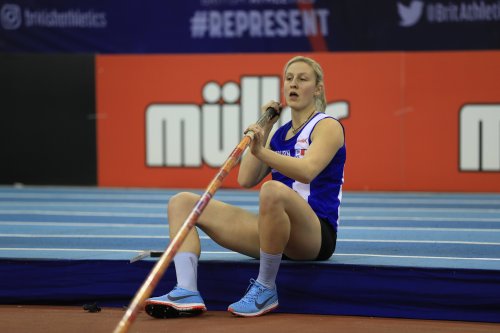 Holly Bradshaw, photo by British Athletics
Holly Bradshaw, photo by British Athletics
“Behavioural – what are her other commitments at this point in time? What have they been in the past? Does she have a job/study/relationship status? What else is going on in her personal life? What are her organizational skills like?”
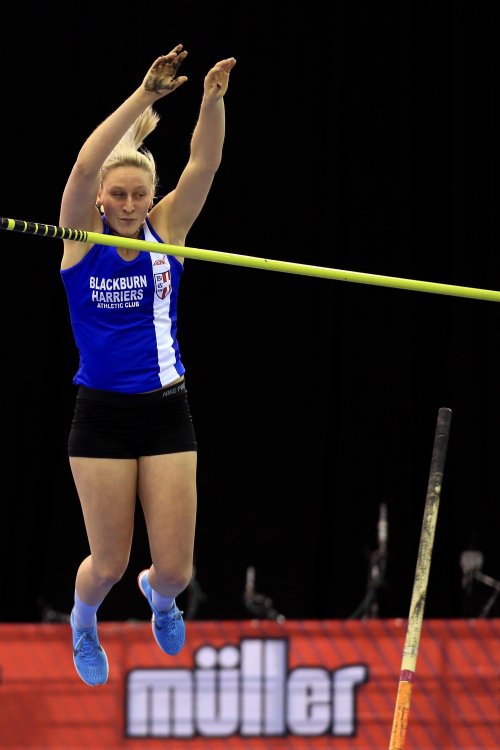 Holly Bradshaw, photo by British Athletics
Holly Bradshaw, photo by British Athletics
“If having considered all those different factors physical capacities, there were no major technical weaknesses and if her lifestyle setup was good but she was still only clearing 4.30m or 4.40m, there would need to be an honest conversation suggesting that 4.75m was not a realistic short-term goal. The goal might have to be reset to being consistent at 4.40m and getting to 4.50m in the next year. On the other hand, if the athlete seemed physically a long way from their potential and if, technically, there are a lot of things that could be improved or nutrition or sleep habits were poor, then one could easily see a way where an improvement of say 30 centimetres could be made. The athlete and coach could agree on a plan and priorities for the coming months”.
He continued: “I suppose it also depends on what the end goal is. If you want an Olympic medal, you’d need to be pretty good in all areas because it is so competitive now that you can’t win an Olympic medal if you don’t have the skills in the physical domain, technical domain and behavioural domain, which includes psychology and mental skills”.
*You can watch the webinar videos on https://www.athleticshub.co.uk/public/
Author

Since 2015, Stuart Weir has written for RunBlogRun. He attends about 20 events a year including all most global championships and Diamond Leagues. He enjoys finding the quirky and obscure story.
View all posts




















